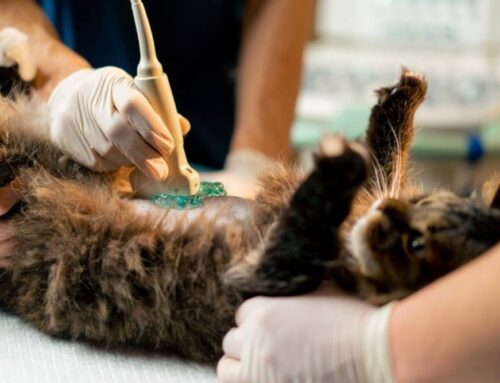Cold winter weather can be fun for pets who enjoy the snow, but when the temperature plummets, you must take precautions to ensure your pet is safe and warm. Winter brings special hazards for pets, so our team at Village Animal Hospital offers suggestions that will help keep your pet safe all winter long.
#1: Watch the weather and prepare for your pet
Always follow the weather, so you have plenty of time to prepare for your pet’s safety when a storm is coming. Don’t rely on your pet’s fur to keep them warm—their fur provides some insulation, but does not prevent their body temperature from dropping quickly in below-freezing or wet conditions. Preparation also involves knowing your pet’s cold tolerance, based on these factors:
- Body size — Smaller pets who have a greater surface-area-to-weight ratio lose heat faster than larger pets.
- Coat density — Double-coated dog breeds (e.g., Siberian husky, German shepherd dog) retain heat better than single-coated breeds (e.g., pit bull terrier, Boston terrier), or those with little to no hair (e.g. Chinese crested, Xoloitzcuintli). Breeds who have curly single coats have slightly more insulation.
- Coat color — The old adage that light colors reflect heat holds true for pets. Those with darker coats absorb more heat from sunlight and stay warmer.
- Age — Young pets and seniors cannot regulate their body temperature as well as healthy adult pets.
- Health status — Chronic health conditions, such as diabetes, kidney failure, Cushing’s disease, and hypothyroidism can make a dog more susceptible to cold temperatures.
Once you have determined your pet’s cold tolerance, you can take action to prepare them. Consider how the cool temperatures will affect your pet’s daily activities, and plan accordingly. For example, you will need to shorten your pet’s walks in extremely cold weather, and you will need to be aware that arthritic and elderly pets find walking on snow and ice difficult and are more likely to slip and fall.
#2: Care for your pet’s paws in the cold
Ice and cold can be especially hard on your pet’s paws, because the long hair between the paw pads can accumulate ice, snow, and chemicals that can cause discomfort and irritate the skin. They can also become ill if they lick the chemical from their feet. To protect your pet’s paws—and their stomach—trim the fur between their paw pads, and wipe their feet when they come in from the snow and ice. Pets with dry, rough paw pads can benefit from a paw balm product that will moisturize their pads and prevent cuts and tears. Pet booties are another great option for winter paw protection, if your pet tolerates them. First acclimate your pet to their booties by wearing them inside, and ensure they fit properly, before you head outdoors.
#3: Pet-proof your home
Your pet will probably spend more time inside during the winter, so ensure you pet-proof your house. Preventing all accidents is not possible, but these pet-proofing tips can reduce your pet’s injury risk:
- Cover electrical cords.
- Install safety latches on cabinets.
- Store cleaning products, laundry detergents, cosmetics, and medication on shelves or cabinets your pet can’t reach.
- Ensure your house plants are pet-safe.
- Use baby gates to keep your pet away from dangerous places (e.g., fireplaces, space heaters).
#4: Protect your pet from antifreeze poisoning
Antifreeze—often used to winterize cars and homes—contains a dangerous ingredient called ethylene glycol that attracts pets because of its sweet taste, but is highly toxic to pets, and only a small amount can prove deadly for a dog or cat. Most pets are poisoned when they lick antifreeze that has leaked from a vehicle onto the ground or the garage floor, so ensure you regularly check around your car, keep pets away from parked vehicles, and clean up spills immediately. Cats can also be poisoned if they lick ethylene glycol from their skin or paws. Contact your veterinarian immediately if you know or suspect that your pet has ingested antifreeze.
#5: Watch for hypothermia signs in your pet

Pets can succumb to hypothermia before the weather is severe, if their body temperature falls below 98 degrees. Hypothermia signs include:
- Shivering
- Muscle Stiffness
- Lethargy
- Pale gums
- Difficulty walking
Immediate action is necessary to warm your pet, to prevent their condition from worsening.
Be mindful of winter’s special hazards, but better still—protect your pet’s health year-round with regular wellness exams. Contact our team at Village Animal Hospital to make an appointment.








Leave A Comment